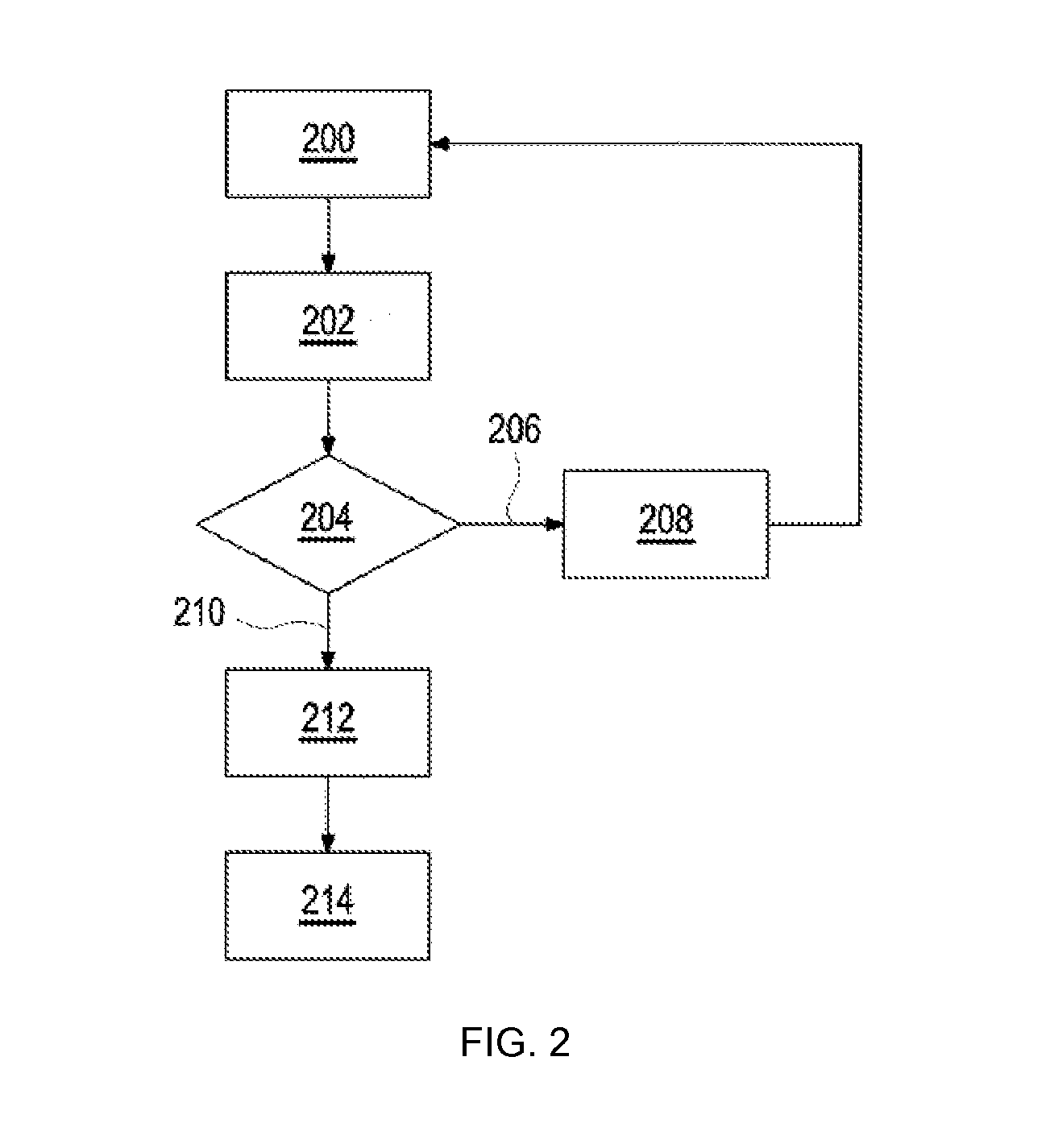Methods of detecting test elements having degraded test chemicals as well as apparatuses incorporating the same
- Summary
- Abstract
- Description
- Claims
- Application Information
AI Technical Summary
Benefits of technology
Problems solved by technology
Method used
Image
Examples
example 1
Test Element Construction
[0167]In this example, layer structures of the test field are prepared as follows:
[0168]Detection layer: For producing a dispersion for the detection layer 118, firstly two partial solutions (partial solution 1 and 2) are prepared; these are then combined to give a partial batch. As used herein, “solution” is used in this connection independently of whether a true solution is actually present or only, for example, a dispersion. An enzyme solution was prepared, and the partial batch 1 and the enzyme solution were mixed, so that a coating material results. For this, the procedure was as follows:
[0169]Partial solution 1: 0.34 g of xanthan gum was pre-swollen in 35.5 g of 0.02 M glycerol 3-phosphate buffer of pH 6.5 for 24 h and mixed with 5.0 g of polyvinyl propionate dispersion.
[0170]Partial solution 2: 5.2 g of Transpafill was dispersed in 21.5 g of water for 10 min using an Ultraturrax.
[0171]Partial batch 1: Both partial solutions were combined and after add...
example 2
Analyte Measurements with an Test Chemistry Quality Measurement
[0184]In FIGS. 3 to 6C, different measurement examples are shown, which were obtained from enzymatic test chemicals. Thus, as explained above, in the course of general investigations on enzymatic detections, an initially surprising property of such test chemicals was found using at least one enzyme. This surprising property being that a degradation is associated with a change in an intrinsic luminescence, in particular an intrinsic fluorescence, of the test chemical that can be measured before wetting the test element with a fluidic sample. On micrographs of a fluorescence of CNAD test strips, initially qualitatively greatly different autofluorescences were observed after storage of these test strips at different temperatures (e.g., from 4° C. and 20° C.). After storage at 20° C., test strips showed markedly increased autofluorescence when compared to test strips stored at 4° C.
[0185]From these observations, subsequent i...
PUM
 Login to View More
Login to View More Abstract
Description
Claims
Application Information
 Login to View More
Login to View More - R&D Engineer
- R&D Manager
- IP Professional
- Industry Leading Data Capabilities
- Powerful AI technology
- Patent DNA Extraction
Browse by: Latest US Patents, China's latest patents, Technical Efficacy Thesaurus, Application Domain, Technology Topic, Popular Technical Reports.
© 2024 PatSnap. All rights reserved.Legal|Privacy policy|Modern Slavery Act Transparency Statement|Sitemap|About US| Contact US: help@patsnap.com










